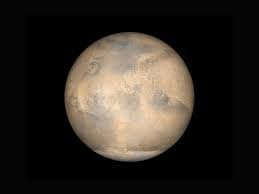Understanding the Fascinating World of Weather and Temperature
Weather impacts nearly every aspect of our daily lives, from the clothes we wear to the activities we plan. While most people rely on modern apps and digital devices to monitor weather, traditional tools and methods offer a timeless and educational way to understand meteorology. Devices like the Galileo thermometer not only measure temperature but also serve as a gateway to appreciating the principles of physics and history.
This article explores how weather works, the tools used to measure it, and how you can integrate weather knowledge into your daily life and learning activities.
How Weather Works: A Simple Overview
Weather refers to the atmospheric conditions at a specific time and place. Understanding its components is essential to grasping how it influences the world.
The Role of Temperature
Temperature determines the warmth or coolness of the air. It is influenced by factors like the Earth’s tilt, the Sun’s energy, and atmospheric conditions. Devices like thermometers, including the Galileo thermometer, provide visual representations of temperature changes.
Wind and Air Pressure
Wind is created by differences in air pressure, which is influenced by temperature and humidity. Low-pressure systems often bring storms, while high-pressure systems lead to clear skies.
Precipitation and Moisture
Precipitation occurs when water vapor condenses into droplets or ice crystals, forming rain, snow, or sleet. Humidity plays a vital role in determining whether the day feels dry or muggy.
Tools for Measuring Weather
Weather measurement tools have evolved significantly, from ancient methods to modern technology.
Thermometers
Thermometers measure air temperature. The Galileo thermometer uses colorful glass spheres suspended in a liquid to indicate temperature changes based on the principles of density.
Barometers
Barometers measure atmospheric pressure. Rising pressure usually predicts fair weather, while falling pressure signals rain or storms.
Anemometers and Wind Vanes
Anemometers measure wind speed, and wind vanes determine direction. These tools are vital for predicting weather patterns and understanding wind behavior.
Rain Gauges
Rain gauges collect and measure rainfall, providing insights into local precipitation levels and helping track trends over time.
Learning Through Weather Observation
Weather observation isn’t just for meteorologists—it’s a valuable learning tool for all ages.
Weather Journals
Keeping a weather journal encourages daily observation and reflection. Note temperature, wind speed, cloud types, and precipitation to track patterns over time.
DIY Weather Stations
Creating a basic weather station at home fosters hands-on learning. Include tools like a thermometer, barometer, and rain gauge for a complete setup.
Science Experiments with Weather
Engage in simple experiments, such as creating a cloud in a jar or measuring evaporation rates, to demonstrate key weather principles.
Integrating Weather Knowledge into Daily Life
Understanding weather can improve decision-making and enrich everyday experiences.
Dressing for the Weather
Knowing how to interpret temperature and humidity helps you choose appropriate clothing and accessories for the day.
Planning Outdoor Activities
Accurate weather predictions make it easier to plan outdoor events like picnics, hiking, or gardening. Recognizing signs of impending rain or storms ensures safety and enjoyment.
Connecting with Nature
Observing weather changes fosters a deeper appreciation for the natural world. From tracking cloud movements to studying seasonal shifts, it’s an excellent way to engage with your environment.
The Historical Significance of Weather Instruments
Weather instruments have a rich history, often linked to groundbreaking scientific discoveries.
The Origins of the Galileo Thermometer
The Galileo thermometer, inspired by the principles of buoyancy and density described by Galileo Galilei, showcases the beauty of science through its functional yet artistic design.
Early Weather Predictions
Before modern technology, people relied on natural indicators like animal behavior, cloud formations, and basic tools to predict weather.
Advancements in Meteorology
From the invention of the mercury thermometer to the development of digital weather stations, technological advances have significantly improved our ability to predict and understand weather patterns.
Final Thoughts
Weather observation and understanding play a crucial role in connecting us to our environment and preparing for daily life. By using tools like thermometers, barometers, and even decorative yet functional devices like the Galileo thermometer, you can gain a deeper appreciation for meteorology and its impact on the world.
Whether you’re tracking storms, planning your day, or simply admiring the artistry of traditional weather instruments, learning about weather enriches your perspective and fosters curiosity. Start exploring weather today and discover the fascinating science that governs our skies.







